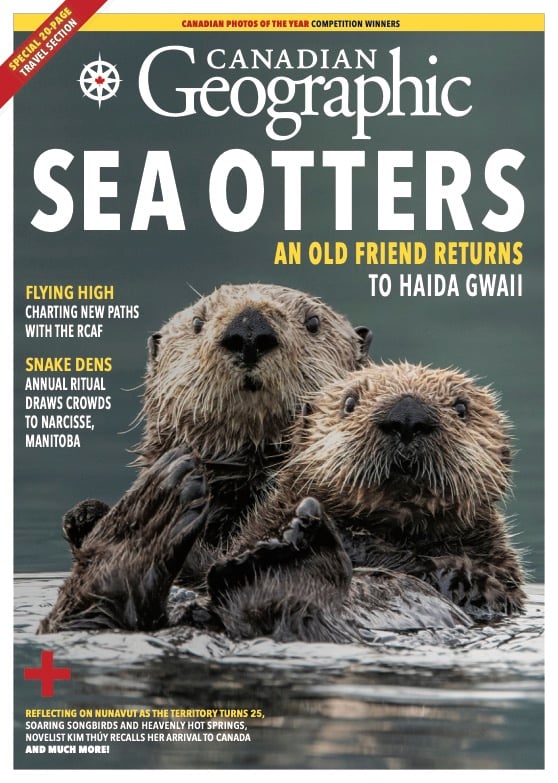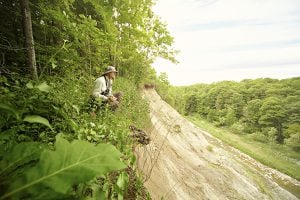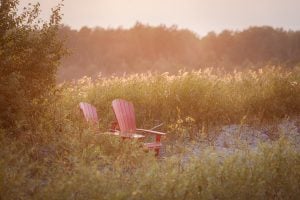“We see a lot of these peaked hats. They were only worn by the women, and the design on each hat is unique,” says Whynot of images from a woman’s clan, or family. “They’re almost a portrait.” Whynot then points out a handprint and a face that he says are probably very old as well. “Here’s one that’s been damaged over the years from canoe strikes, and there’s writing all over it.” He then pivots our point of view, and a clear image emerges. “It is actually [a drawing of ] two feet.”
This spot here is one of five highly protected sites across the park, displaying about 500 known petroglyphs, all on the shores of Keji Lake. Despite the care, erosion from Mother Nature and desecration by paddlers have already claimed many images. But a few of the images that Whynot shares take us aback. They are more recent.
“You see here ships, big sailing ships. You wouldn’t have seen them on this lake. That’s obviously a story from along the coast, brought back here to be told,” explains Whynot. “So you’re going out on the ocean waters to hunt for porpoise and seals in a birchbark craft. And then you start seeing these massive sailing ships. You’re not going to forget it. You’re going to come back. You’re going to draw and tell people, ‘You’re not going to believe the size of the canoe I just saw!’”
Tim and I exchange glances. It’s entirely possible that one of these images of a European sailing ship is Hector. It feels like we’re standing at the intersection of two cultures, and in a moment in history that would change both forever.
Later, Tim and I paddle the inlets and coves of Keji Lake, then settle in at our campsite in the park. We gaze at the remarkable heavens, before falling asleep to a chorus of spring peepers.



















